Following is the list of cities and the associated costs for the LASIK in Thailand:
| City | Minimum Cost (USD) | Minimum Cost (THB) | Maximum Cost (USD) | Maximum Cost (THB) |
|---|---|---|---|---|
| Nonthaburi | USD 2250 | 80212 | USD 4050 | 144382 |
| Bangkok | USD 2500 | 89125 | USD 4500 | 160425 |
| Krabi | USD 2500 | 89125 | USD 4500 | 160425 |
Following is the list of countries and the associated costs for the LASIK:
| Country | Minimum Cost | Minimum Local Currency | Maximum Cost | Maximum Local Currency |
|---|---|---|---|---|
| India | USD 1000 | INR 83150 | USD 2000 | INR 166300 |
| Turkey | USD 1100 | TRY 33154 | USD 2424 | TRY 73059 |
| United Arab Emirates | USD 2200 | AED 8074 | USD 4000 | AED 14680 |
Treatment cost
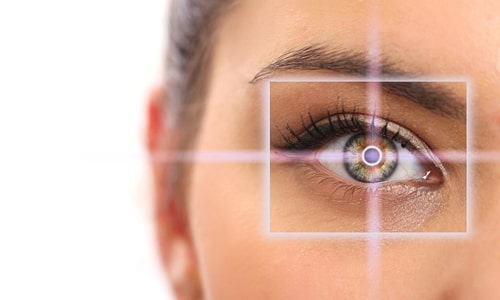
We provide numerous services for your medical journey, including:
We offer packages at reasonable pricing that include a variety of additional advantages, making it a better deal than paying for individual perks at the hospital. LASIK stands for Laser-assisted in situ keratomileusis. This surgery can be a substitute for eyeglasses or contact lenses. Lasik Eye Surgery is a common procedure used to correct vision problems, performed by laser refractive surgery. During the procedure, a special type of cutting laser is used to precisely change the shape of the dome-shaped clear tissue at the front of your eye (cornea) to improve vision., We offer the best Lasik Eye Surgery comprehensive & discounted packages in Turkey. Lasik Eye Surgery at Asya Hospital is an all-inclusive package, with additional advantages.
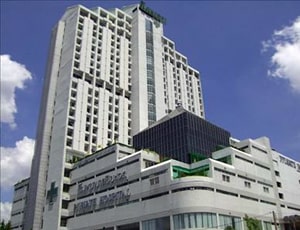
Types of LASIK in Piyavate Hospital and its associated cost
| Treatment Option | Approximate Cost Range (USD) | Approximate Cost Range (THB) |
|---|---|---|
| LASIK (Overall) | 2852 - 5520 | 101566 - 197452 |
| Standard LASIK | 2768 - 4019 | 99518 - 137600 |
| Custom LASIK | 3313 - 5049 | 121259 - 177211 |
| Bladeless LASIK | 4489 - 5511 | 162926 - 199913 |
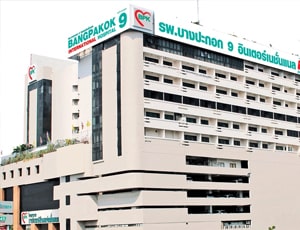
Types of LASIK in Bangpakok 9 International Hospital and its associated cost
| Treatment Option | Approximate Cost Range (USD) | Approximate Cost Range (THB) |
|---|---|---|
| LASIK (Overall) | 2799 - 5545 | 99838 - 204208 |
| Standard LASIK | 2756 - 3979 | 98389 - 137469 |
| Custom LASIK | 3320 - 4964 | 120028 - 182915 |
| Bladeless LASIK | 4459 - 5729 | 157382 - 196167 |
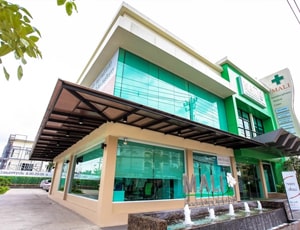
Types of LASIK in MALI Interdisciplinary Hospital and its associated cost
| Treatment Option | Approximate Cost Range (USD) | Approximate Cost Range (THB) |
|---|---|---|
| LASIK (Overall) | 2534 - 5057 | 90513 - 181496 |
| Standard LASIK | 2529 - 3538 | 90309 - 126828 |
| Custom LASIK | 3047 - 4555 | 108837 - 162820 |
| Bladeless LASIK | 4055 - 5084 | 144217 - 180923 |

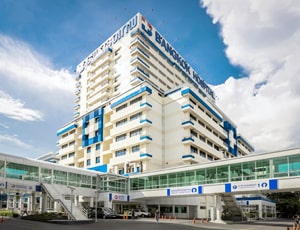
Types of LASIK in Bangkok Hospital and its associated cost
| Treatment Option | Approximate Cost Range (USD) | Approximate Cost Range (THB) |
|---|---|---|
| LASIK (Overall) | 2773 - 5609 | 102044 - 201806 |
| Standard LASIK | 2807 - 3893 | 100344 - 138849 |
| Custom LASIK | 3411 - 5056 | 119187 - 184402 |
| Bladeless LASIK | 4539 - 5707 | 161416 - 199419 |
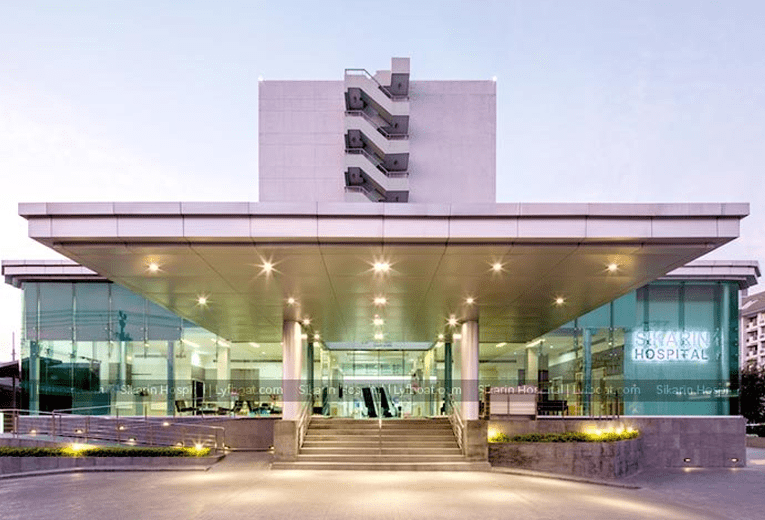
Types of LASIK in Sikarin Hospital and its associated cost
| Treatment Option | Approximate Cost Range (USD) | Approximate Cost Range (THB) |
|---|---|---|
| LASIK (Overall) | 2835 - 5638 | 99620 - 201931 |
| Standard LASIK | 2841 - 3868 | 100579 - 137288 |
| Custom LASIK | 3349 - 5166 | 121493 - 180885 |
| Bladeless LASIK | 4586 - 5503 | 160360 - 198370 |
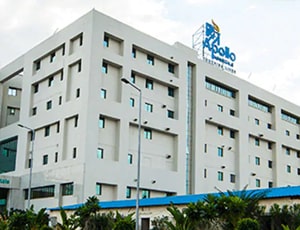
Types of LASIK in Apollo Hospital and its associated cost
| Treatment Option | Approximate Cost Range (USD) | Approximate Cost Range (INR) |
|---|---|---|
| LASIK (Overall) | 574 - 1724 | 46731 - 140933 |
| Standard LASIK | 561 - 1148 | 46120 - 94116 |
| Custom LASIK | 882 - 1706 | 74193 - 140975 |
| Bladeless LASIK | 1142 - 1672 | 93675 - 139837 |
DOCTORS IN 13 SPECIALITIES
FACILITIES & AMENITIES
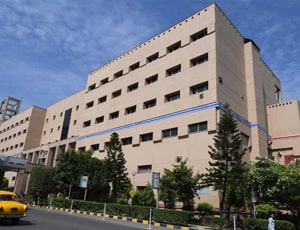
Types of LASIK in Apollo Multispecialty Hospitals and its associated cost
| Treatment Option | Approximate Cost Range (USD) | Approximate Cost Range (INR) |
|---|---|---|
| LASIK (Overall) | 556 - 1689 | 46156 - 138741 |
| Standard LASIK | 566 - 1132 | 46852 - 91331 |
| Custom LASIK | 890 - 1671 | 72704 - 137551 |
| Bladeless LASIK | 1104 - 1652 | 90580 - 141292 |
DOCTORS IN 13 SPECIALITIES
FACILITIES & AMENITIES
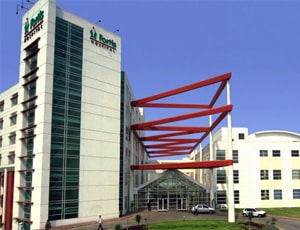
Types of LASIK in Fortis Hospital and its associated cost
| Treatment Option | Approximate Cost Range (USD) | Approximate Cost Range (INR) |
|---|---|---|
| LASIK (Overall) | 507 - 1529 | 41701 - 125399 |
| Standard LASIK | 506 - 1013 | 41679 - 83387 |
| Custom LASIK | 814 - 1519 | 66267 - 124467 |
| Bladeless LASIK | 1011 - 1529 | 83387 - 124987 |
DOCTORS IN 12 SPECIALITIES
FACILITIES & AMENITIES
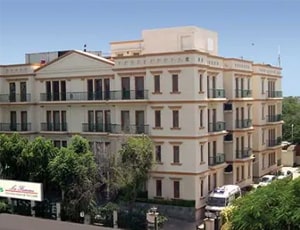
Types of LASIK in Fortis La Femme, Greater Kailash II and its associated cost
| Treatment Option | Approximate Cost Range (USD) | Approximate Cost Range (INR) |
|---|---|---|
| LASIK (Overall) | 507 - 1516 | 41529 - 124249 |
| Standard LASIK | 509 - 1020 | 41659 - 83268 |
| Custom LASIK | 810 - 1523 | 66359 - 124914 |
| Bladeless LASIK | 1013 - 1524 | 83608 - 124654 |
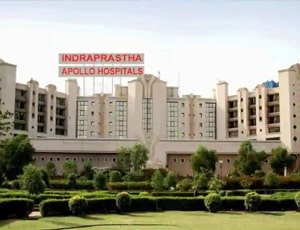
Types of LASIK in Indraprastha Apollo Hospital and its associated cost
| Treatment Option | Approximate Cost Range (USD) | Approximate Cost Range (INR) |
|---|---|---|
| LASIK (Overall) | 562 - 1699 | 45458 - 140874 |
| Standard LASIK | 573 - 1136 | 46339 - 91278 |
| Custom LASIK | 897 - 1715 | 73231 - 138559 |
| Bladeless LASIK | 1110 - 1687 | 93466 - 136881 |
DOCTORS IN 14 SPECIALITIES
FACILITIES & AMENITIES

Types of LASIK in VPS Lakeshore Hospital and its associated cost
| Treatment Option | Approximate Cost Range (USD) | Approximate Cost Range (INR) |
|---|---|---|
| LASIK (Overall) | 509 - 1522 | 41443 - 125121 |
| Standard LASIK | 508 - 1013 | 41699 - 83135 |
| Custom LASIK | 809 - 1521 | 66320 - 124419 |
| Bladeless LASIK | 1013 - 1523 | 83392 - 125389 |
DOCTORS IN 13 SPECIALITIES
FACILITIES & AMENITIES

Apart from in-detail treatment procedures available, Parkside Private Hospital located in London, United Kingdom has a wide variety of facilities available for International Patients. Some of the facilities which are provided by them are Accommodation, Airport Transfer, Choice of Meals, Interpreter, SIM, TV inside room. Also listed below are some of the most prominent infrastructural details:
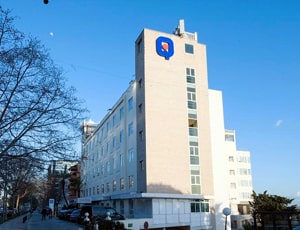
Apart from in-detail treatment procedures available, Quironsalud Marbella Hospital located in Marbella, Spain has a wide variety of facilities available for International Patients. Some of the facilities which are provided by them are Accommodation, Airport Transfer, Choice of Meals, Interpreter, SIM, TV inside room. Also listed below are some of the most prominent infrastructural details:

Types of LASIK in Quironsalud Ophthalmologic Institute and its associated cost
| Treatment Option | Approximate Cost Range (USD) | Approximate Cost Range (AED) |
|---|---|---|
| LASIK (Overall) | 898 - 4471 | 3315 - 16607 |
| Standard LASIK | 897 - 1357 | 3357 - 4902 |
| Custom LASIK | 2273 - 2779 | 8089 - 10119 |
| Bladeless LASIK | 3623 - 4518 | 12929 - 16475 |
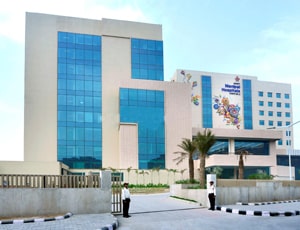
Types of LASIK in Manipal Hospital, Dwarka and its associated cost
| Treatment Option | Approximate Cost Range (USD) | Approximate Cost Range (INR) |
|---|---|---|
| LASIK (Overall) | 509 - 1525 | 41421 - 124732 |
| Standard LASIK | 508 - 1013 | 41738 - 83426 |
| Custom LASIK | 808 - 1526 | 66866 - 124320 |
| Bladeless LASIK | 1015 - 1526 | 83188 - 124966 |
DOCTORS IN 13 SPECIALITIES
FACILITIES & AMENITIES
Lasik surgery is one of the most popular procedures for correction vision. For problems like astigmatism, myopia, and hypermetropia, Lasik offers a near-permanent solution thereby restoring healthy vision to the suffering individual. Abbreviated from Laser Assisted In Situ Keratomileusis, LASIK is a laser-assisted eye surgery that implements microkeratomes for the improvement of visual acuity. The laser is targeted at the cornea, which is re-adjusted or reshaped so as to provide unaided vision to the candidates. Lasik treatment is very popular owing to its remarkable success rates, which is why, approximately 700,000 procedures are performed annually.
Ask your healthcare adviser for the best multiple options and choose the one that meets your expectations
The cost of LASIK in Thailand starts from USD$ 3300. LASIK in Thailand is available across many hospitals in different states.
LASIK cost in Thailand varies from one hospital to the other. Some of the best hospitals for LASIK offer a comprehensive package that covers the end-to-end expenses related to investigations and treatment of the patient. The comprehensive LASIK package cost includes the cost of investigations, surgery, medicines and consumables. Stay outside the package duration, port-operative complications and diagnosis of a new condition may further increase the LASIK cost in Thailand.
There are several best hospitals for LASIK in Thailand. Some of the most renowned hospitals for LASIK in Thailand include the following:
After discharge from the hospital, the patient has to stay for another 7 days in the country for complete recovery. During this time, the patient undergoes medical tests and consultations. this is to ensure that the treatment was successful and the patient us safe to return.
One of the topmost destinations for LASIK is Thailand. It has a variety of accredited hospital, affordable cost of treatment and some of the best medical fraternity. Some of the other destinations that are popular for LASIK include the following:
Apart from the LASIK cost, the patient may have to pay for additional daily expenses such as for guest house after discharge and meals. The per day extra expenses in Thailand per person is about USD$ 25
Some of the best cities in Thailand which offer LASIK are:
The average duration of stay at the hospital after LASIK is about 1 days for proper care and monitoring. During the recovery, the patient is carefully monitored and control tests are performed to see that everything is okay. If required, physiotherapy sessions are also planned during recovery in hospital.
These hospitals have the required expertise as well as infrastructure available to handly patients who need LASIK
The average cost for LASIK surgery in Thailand starts at around 3000 USD. This is the general cost for a surgical procedure for both eyes. The minimum cost for LASIK surgery is 1500 USD, for both eyes. The actual cost might differ for every patient. It will depend on the surgical procedure, consultant, and various other factors.
The surgical procedure that one opts for is a major factor that plays a deciding role in the entire cost of the treatment. Some of the factors that generally influence the cost are the level of correction required for visual acuity, the kind of technology and equipment that will be used for the procedure, the surgical approach adopted, and the consultant cost of the surgeon who will be doing the procedure.
Here are some of the top clinics and hospitals in Thailand for Laser Eye surgery -
Most surgeons come with experience. The surgery for the eye is a very delicate process and requires experience. Here are some of the top surgeons for LASIK surgery in Thailand -
Since Thailand is an affordable country for surgical procedures, many patients visit this country for treatment. Therefore, the facilities are ever-evolving. LASIK surgery has very minimal complications. Less than 1% of patients face serious complications. Therefore, the success rate of LASIK surgery in Thailand is very high.
LASIK Surgery is one of the most common methods for the correction of vision defects. These are the commonly used approaches -
LASIK (laser in-situ keratomileusis)
This surgery is specially done to modify the corneal tissue beneath the lens of the eye to focus the light in such a way that it directly reaches the retina. It is usually opted for, by people who suffer from hyper - metropia or far - sightedness, myopia, or near sightedness and cylindrical lens error or astigmatism. Quite often, the performing surgeon makes and elevates a flap on the external surface, near the cornea region in order to gain access to the underlying structures and tissues of the eye. It is a very delicate process and requires efficient technology using computer-aided machines and designing (CAD - CAM). This helps to create a proper treatment plan.
Photorefractive keratectomy or PRK
PRK is a surgical procedure that is done using laser technology to reshape the cornea region of the eye. The PRK procedure helps in the correction of the eye only in the corneal layer. It is suitable for people who suffer from hypermetropia or far - sightedness, myopia or near - sightedness, and cylindrical lens error or astigmatism. Like LASIK, PRK also uses computer-aided machine and designing (CAD - CAM) to create a proper treatment plan.
LASEK or laser epithelial keratomileusis
This procedure is nearly similar to that of PRK. The surgeon elevates a flap near the cornea region by elevating a flap near the epithelial cell layer. A laser is then used to modify the corneal shape and then a soft contact lens is secured in its place. After healing, the vision can be corrected. It is suitable for people who suffer from hyper - metropia or far - sightedness, myopia or near-sightedness and cylindrical lens error or astigmatism.
ALK or automated lamellar keratoplasty
ALK is usually preferred for near-sightedness or myopia. The surgeon elevates a flap near the cornea region by elevating a flap to gain access to the underlying structures and tissues of the eye. A laser is not used in this procedure. After healing, the vision can be corrected.
RLE or refractive lens exchange
It is also known as CLE or clear lens extraction. It can be referred to as RLR, that is, refractive lens replacement.
RLE or refractive lens exchange is a correction procedure which is done especially for patients requiring surgery for correcting cataract. The operating surgeon makes a minute incision to take out the natural lens of the eye from the edge of the cornea and replaces it with a silicone lens or any other biocompatible lens. It is also suitable for people suffering from severe myopia or hypermetropia. This procedure can be used to treat thin corneas, dryness in the eyes, and other minor eye problems. Some procedures can even be used to correct astigmatism.
EpiLasik
The EpiLasik procedure is very similar to PRK. The doctor elevates a thin layer of the cornea and then modifies it. The layer can be removed from there, partially modified, or replaced with a biocompatible material. The doctor completes the procedure by applying a soft contact lens to protect the area until it can fully heal.
PRELEX (presbyopic lens exchange)
Once the natural lens of the eye loses its flexibility, the condition is then referred to as presbyopia. People suffering from presbyopia have difficulty focusing on nearby objects. PRELEX is a procedure where the surgeon implants a multifocal lens to improve the flexibility of the lens of the eye and restore the focus.
Intacs
Intacs can be referred to as intracorneal ring segments (ICR). In this method, the doctor makes a minute incision in the cornea. Two crescent-shaped plastic rings are placed near the external edge of the cornea to make it flat. The flattened cornea allows for light rays to be adjusted in such a way, that it directly focuses on the retina. ICR has been replaced in most places by procedures using lasers to treat mild cases of nearsightedness.
Phakic Intraocular Lens Implants
For some patients who are not eligible for PRK and LASIK, Phakic Intraocular Lens Implants are used. In this method, the surgeon inserts an implant through a very small incision at the edge of the cornea that attaches to the iris behind the pupil. The eye’s natural lens is not removed.
AK (astigmatic keratotomy)
AK is a surgical procedure that corrects astigmatism or cylindrical visual defect without the use of a laser. People with astigmatism have corneas that have expanded spherically. The surgical procedure involves making modifications at the most prominent points in the cornea. After making these incisions, the cornea becomes more flexible and attains a rounded shape. This surgery can be performed as a single surgery on its own or in association with other surgeries.